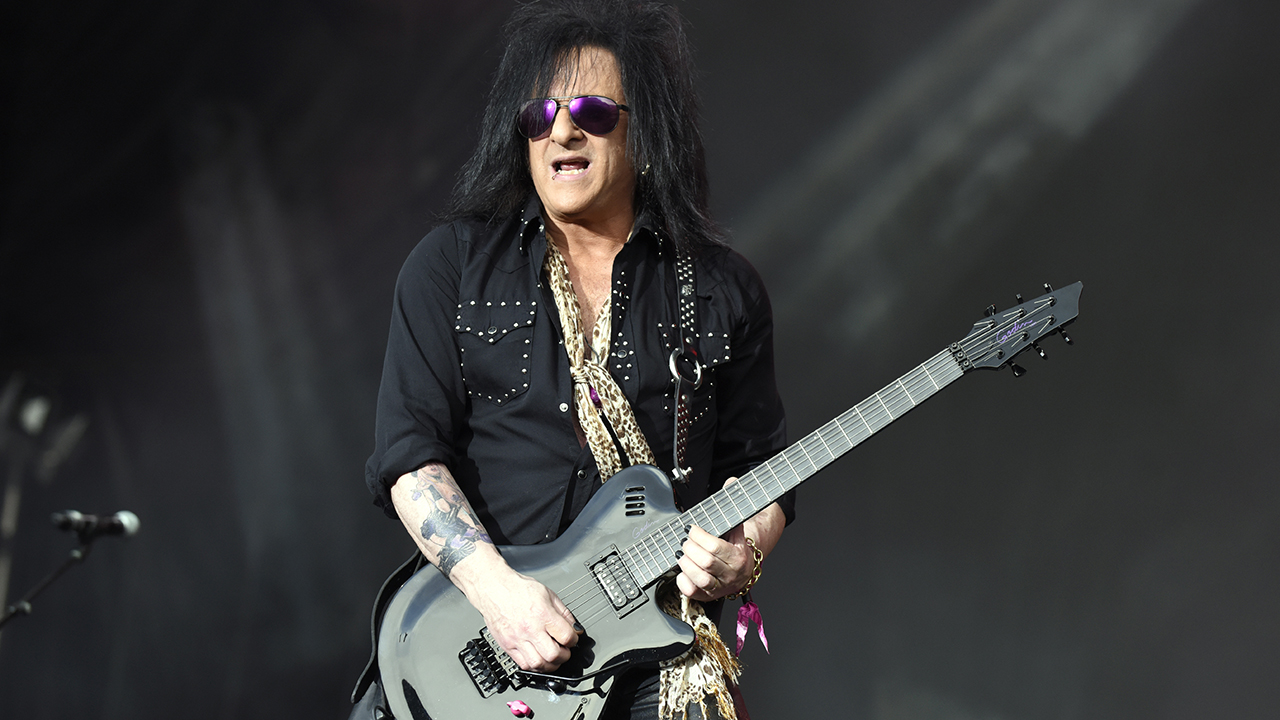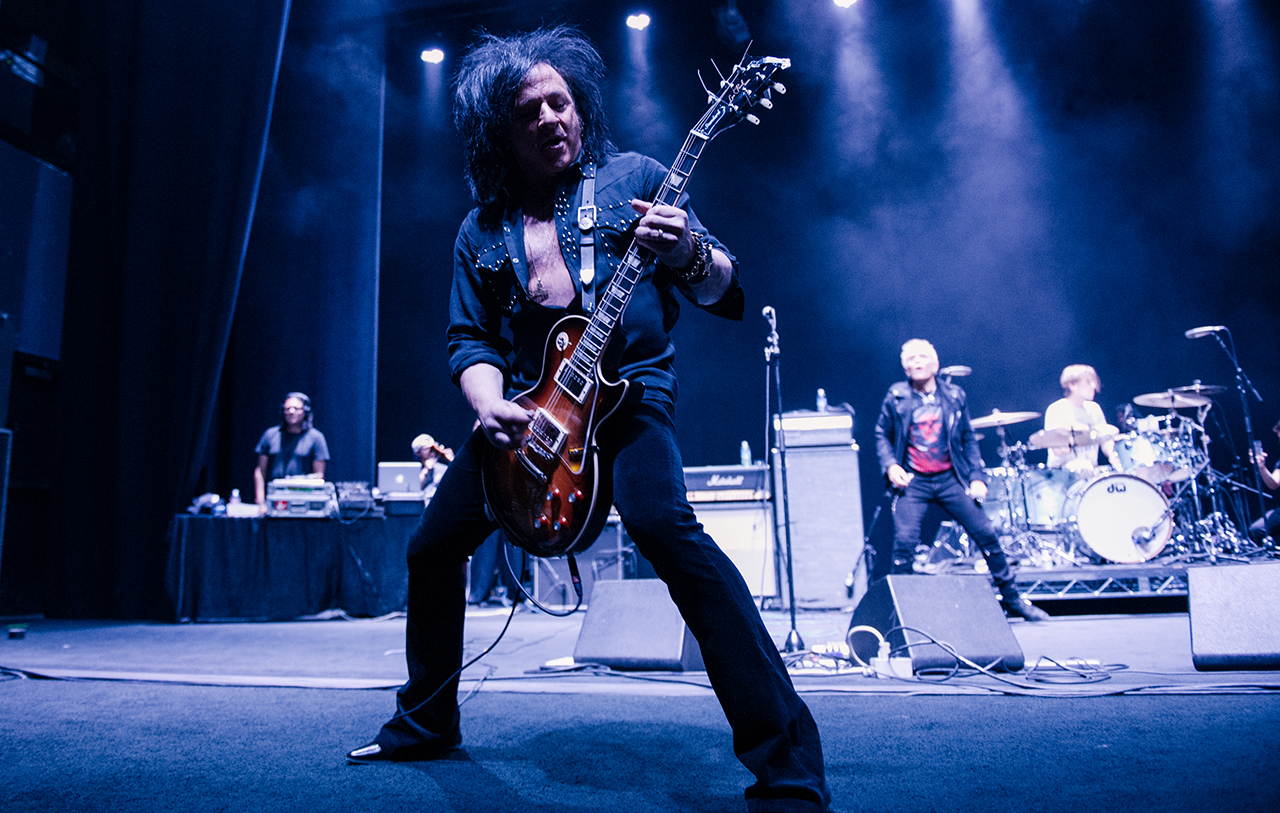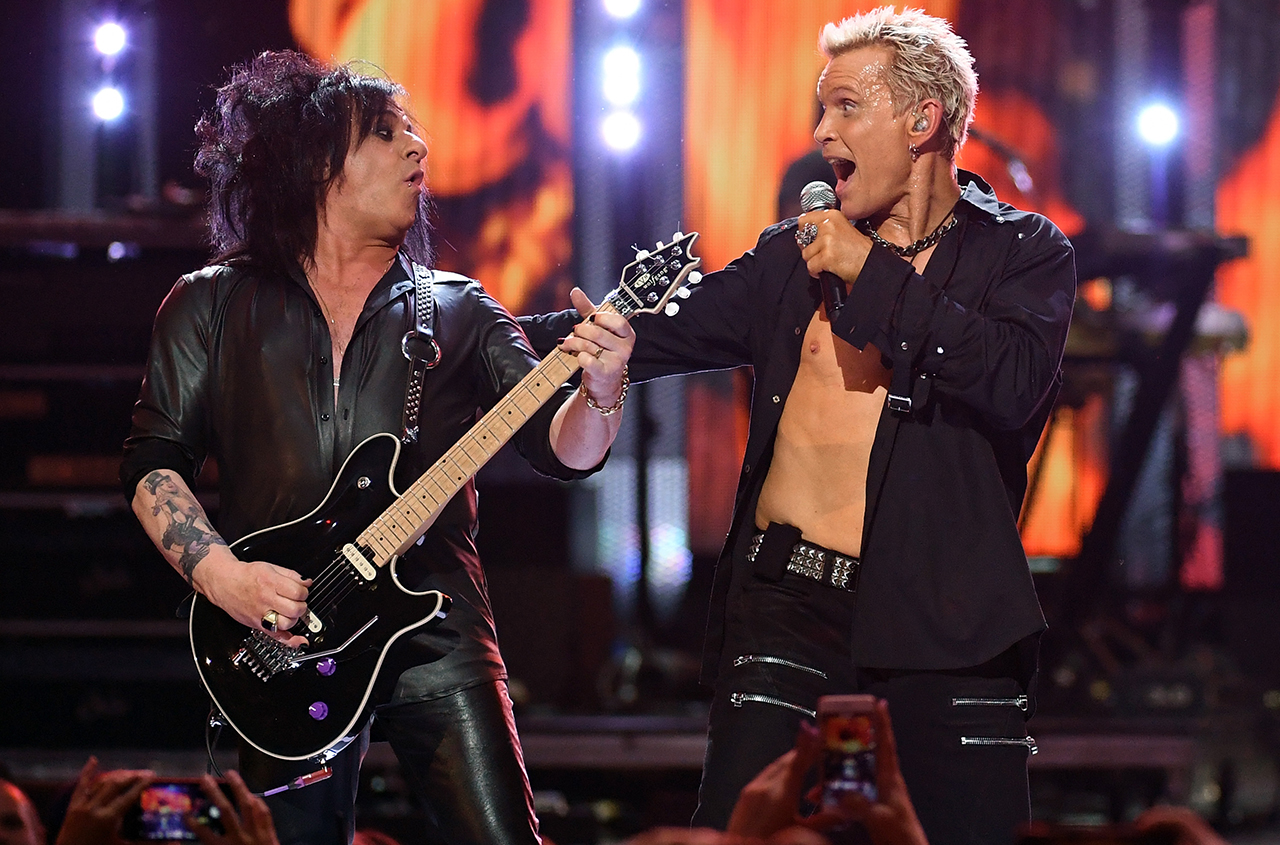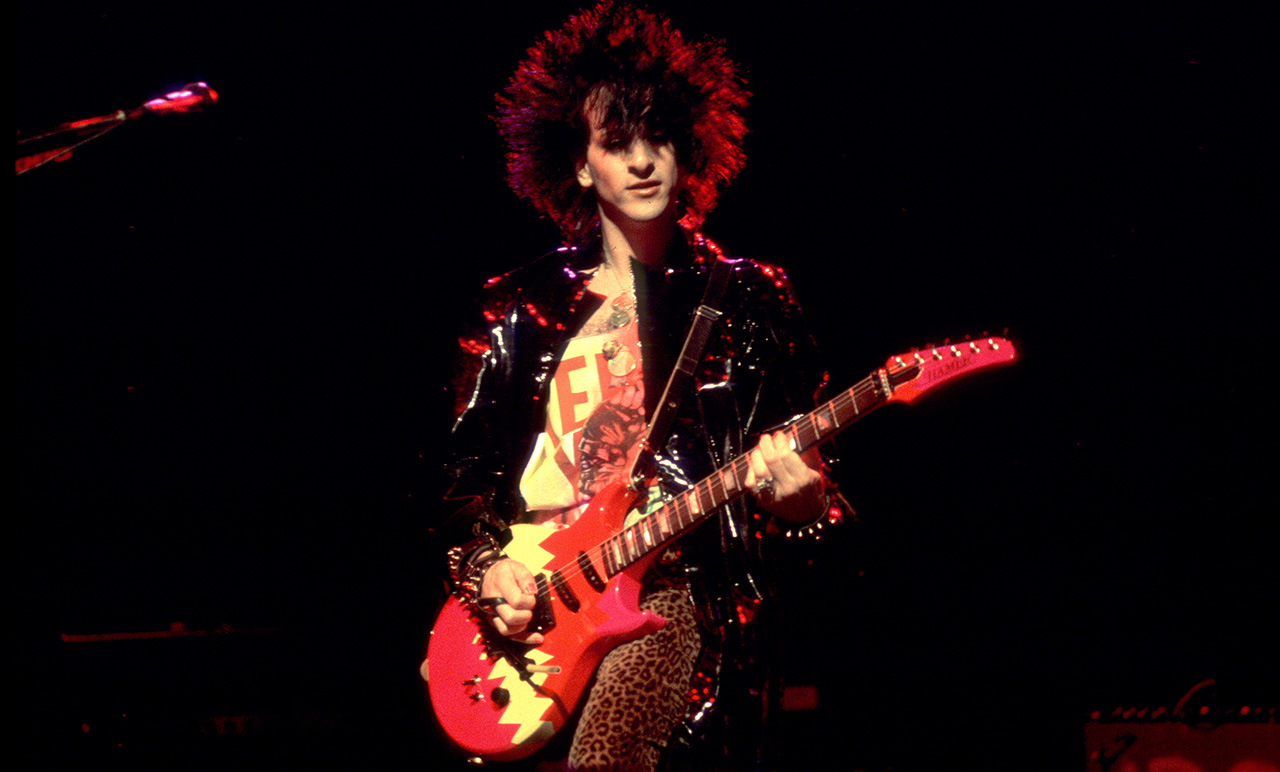“I was approached to join David Lee Roth’s band, initially… I didn’t want to be Eddie Van Halen part two”: Steve Stevens on laying down the Dirty Diana solo with Michael Jackson and Quincy Jones, recording Rebel Yell – and why Vai got it right with Roth
The Billy Idol guitarist discusses the folk guitar lick he adapted for one of his boss’ biggest hits, his secret-weapon amp, and how his early work is echoed in Idol’s upcoming return-to-punk record

Steve Stevens made his way onto the map when he appeared on Billy Idol’s first two solo albums – and soon the likes of David Lee Roth and Michael Jackson were vying for his services.
While he rebuffed Roth due to his friendship with Eddie Van Halen, he did take Jackson up on his offer, playing on 1987 hit single Dirty Diana – the so-called spiritual successor to Beat It (which had, of course, featured a searing EVH solo).
Stevens insists Van Halen’s tone and approach did not inform his own. But he does concede that producer Quincy Jones, had a specific way of operating that brought out a particular attitude.
“You can only imagine all the musicians Quincy worked with and inspired,” Stevens tells Guitar World. “He was an inspiring guy, man. He was the real deal; one of the greats.”
He continues: “Michael was looking for the big spectacle. He asked me about sound companies and lighting companies for his first big solo tour, and if I’d seen Queen. He had gone to all these big rock shows. That’s the way he wanted to present himself. As a Black artist he was going to be the first to tour in a way that rock ‘n’ roll shows did.”
How did Quincy Jones and Michael Jackson handle you as a guitar player?
“Quincy was one of the absolute monolithic record producers in the world. With any great producer, the number one job is to put the musician at ease and get the best possible performance. There were a lot of jokes and it was just a really chill vibe.”
Get The Pick Newsletter
All the latest guitar news, interviews, lessons, reviews, deals and more, direct to your inbox!
This was your proper session outside of Billy Idol, right?
“I had never done a session outside of Billy Idol. With Billy, it was always myself, Billy, a producer, and an engineer. It was a very small group of people. When I flew to LA to do the Michael Jackson thing I was thinking, ‘There’s going to be this huge entourage, the fucking monkey is going to be there, and all this crazy shit!’”
What did you actually find?
“I opened the studio door and it was exactly like doing an Idol session. It was Michael, Quincy and the engineer – no big egos, no entourage, none of that stuff. And what was cool is we got what they had in mind, the melody and the rhythm stuff, and then Quincy said, ‘You go in there and do what you want.’”
You weren’t given specific directions?
“He said, ‘Without us directing you, what would you do?’ That’s what ended up being most of the solo for Dirty Diana, and the outro and all that.”

Did Quincy and Michael have a vision as far as tone?
“Not at all. They kind of left it up to me. I came highly recommended by [producer] Ted Templeman, too. Ted had signed me to Warner Brothers and he was my A&R guy. The story goes that Ted and Quincy wanted to follow up the success of Beat It with another rock track. So, Quincy asked Ted, ‘Hey, man, who do you suggest?’ and Ted threw my name in there.”
Did Michael give feedback on your guitar work?
“After I had done the solo Michael says to me, ‘Hey, oh, I really like the high notes. I go, ‘Okay, cool.’ And then, when I met Eddie Van Halen, I said, ‘Oh, you know, I just worked with Michael. I did the follow-up album for Thriller.’ He goes, ‘Hey, man, did he say he liked the high notes?’ I said, ‘Yeah – great direction, right?’”
Because they’re rock-oriented, Dirty Diana and Beat It are often linked. Did you have Eddie’s approach ringing in your ears while recording?
“Not all. Ed’s tone is… I always looked at it as sacred ground. I can appreciate other guitar players, but I’ve never been one of those guys to mimic other players. And I don’t know if it’s common knowledge, but I was approached to join David Lee Roth’s band initially, and I didn’t want to be Eddie part two, you know?
“I think Steve Vai has a strong enough personality, and as a stylist, to make it his own. But I was in fear of falling into exactly what you’re saying – hearing Dave’s voice and hearing Ed’s tone.
“We both used similar amps, late-’60s Marshall Plexis, and we had similar views on how to use them. There’s certain guitar players that are near and dear to my heart, and I never tried to emulate them; and definitely not in the case of Dirty Diana.”
What were the keys to your Dirty Diana tone?
“The same late-’60s Marshall Plexi I’ve been blessed with. That amp has appeared on the Top Gun soundtrack, a Vince Neil record [Exposed]… I still have that amp to this day. Guitar-wise I had one Charvel – much to the chagrin of Hamer Guitars, who I endorsed. But my one Charvel just had the voodoo; it’s a guitar I still have, and that was my main recording guitar there.”
If you’re not inspired by the house that Jimi Hendrix built, you’ve got a problem! I lived and breathed that studio
Elsewhere, you’ve been celebrating Billy Idol’s second solo album 1983’s Rebel Yell. What are your memories?
“Having the experience of already doing one album with Billy, I was really learning in the studio. I had no idea about engineering and microphones. All I knew is, ‘I’ve got this guitar and an amp that I like,’ and I trusted our producer, Keith Forsey.
“When we went to do Rebel Yell we were fully rehearsed, the tunes were written, and we did pre-production at Electric Lady Studios. If you’re not inspired by the house that Jimi Hendrix built, you’ve got a problem! I lived and breathed that studio. At the time, I was living in the basement of my parents’ house in Queens, so many times I’d sleep in the studio, wake up and go back to work.”

What are you most proud of from a guitar perspective?
“Keith Forsey really indulged me. My attitude was, ‘No synthesizers; that’s the way we’re going to do this record.’ I said, ‘I want all the sounds to come from my guitar. I want to create all the textures and effects with my guitar.’
“I really orchestrated all those different guitar sounds. Every now and again we’d say, ‘Jah came down,’ which means God shines down on your and gives you all the good stuff. If we got a good take, we’d say, ‘Jah came down.’ And Jah was definitely with us for the making of that record.”
Do you remember recording the title track?
“The intro was the last thing to be done. Keith said, ‘We need something in front of the song that lets them know, ‘Hey, the pirate ship is coming.’ It was sort of a finger-style thing that I had nicked from Leo Kottke. I listened to a lot of folk players – I actually started on folk guitar before electric guitar.
“I wanted the guitar to be completely independent of what was happening quarterly on the bass. So the guitar never follows the bass; it plays a stagnant Bm seventh and then goes to A ninth. My top note in each of the chords is the same note that Billy’s singing, so I’m closely tied to Billy’s melody. That became a hallmark of my style.”

Do you ever think how your career might have gone had you accepted David Lee Roth’s offer?
“Not really – by the time I met Dave I had already played with Eddie and hung out with him. I really liked the friendship and I just thought, ‘I’m not the right guy.’ And I didn’t want to leave Billy either.
“I was approached while we were finishing up Billy’s third album, Whiplash Smile, and I’m a committed band guy. I just thought, ‘It’s not the right thing for me.’ Plus, I’m too short – those guys are all tall!”
Nobody does early-‘80s punk better… a lot of bands are influenced by that, so we might as well own it
More recently you were part of Ozzy Osbourne’s Rock and Roll Hall of Fame jam.
“I had the pleasure of working with Ozzy and Billy Morrison on a song called Crack Cocaine, which went to Number 1 on the rock charts. I was really honored when Ozzy asked Billy Idol and myself to be part of the medley at the Hall of Fame.
“A lot of people have opinions about the Hall of Fame; they have certain bands that are their favorites, and I have certain bands that I believe should be in there too. But if I don’t get my foot in the door and get in their faces, I can’t make a change.
“I learned that through Tom Morello, who got Randy Rhoads inducted. I was involved with that; I thought, ‘It’s a way to be involved, somehow.’ When Ozzy Osbourne asks you to contribute to something like that, man, it doesn’t take a rocket scientist to agree to it!”
What’s the trick to tackling those iconic guitar tones and styles?
“With Crack Cocaine we specifically went after the ‘90s Ozzy stuff – the Zakk Wylde stuff. So a fair amount of pinch harmonics. I’ve had a 40-something-year career of recording guitars; I can pretty much listen to a record and go, ‘I know how to get that sound.’”
The word is that Billy Idol is working on his first album since 2014.
“Yeah, we’re finishing up a record with producer Tommy English. In some respects it’s a return to the aggressive punk rock. Nobody does late-‘70s, early-‘80s punk better than Billy Idol. There’s a lot of bands that are influenced by that, so we might as well own it.
“There’s some incredible heartfelt ballads, and Billy’s performance is phenomenal. But my job, man, is to provide the song with what it really needs. There’s a lot of experimental guitar sounds on it. We shied away from the keyboards, so it’s the same approach as Rebel Yell – to provide a soundscape, ideas and an environment that originally comes from the guitar. We’re really excited.”
- Follow Steve Stevens on Instagram.
Andrew Daly is an iced-coffee-addicted, oddball Telecaster-playing, alfredo pasta-loving journalist from Long Island, NY, who, in addition to being a contributing writer for Guitar World, scribes for Bass Player, Guitar Player, Guitarist, and MusicRadar. Andrew has interviewed favorites like Ace Frehley, Johnny Marr, Vito Bratta, Bruce Kulick, Joe Perry, Brad Whitford, Tom Morello, Rich Robinson, and Paul Stanley, while his all-time favorite (rhythm player), Keith Richards, continues to elude him.
“Such a rare piece”: Dave Navarro has chosen the guitar he’s using to record his first post-Jane’s Addiction material – and it’s a historic build
“The best guitar player I ever heard”: Nashville guitar extraordinaire Mac Gayden – who worked with Bob Dylan, Elvis, Linda Ronstadt and Simon & Garfunkel – dies at 83







![[from left] George Harrison with his Gretsch Country Gentleman, Norman Harris of Norman's Rare Guitars holds a gold-top Les Paul, John Fogerty with his legendary 1969 Rickenbacker](https://cdn.mos.cms.futurecdn.net/TuH3nuhn9etqjdn5sy4ntW.jpg)





